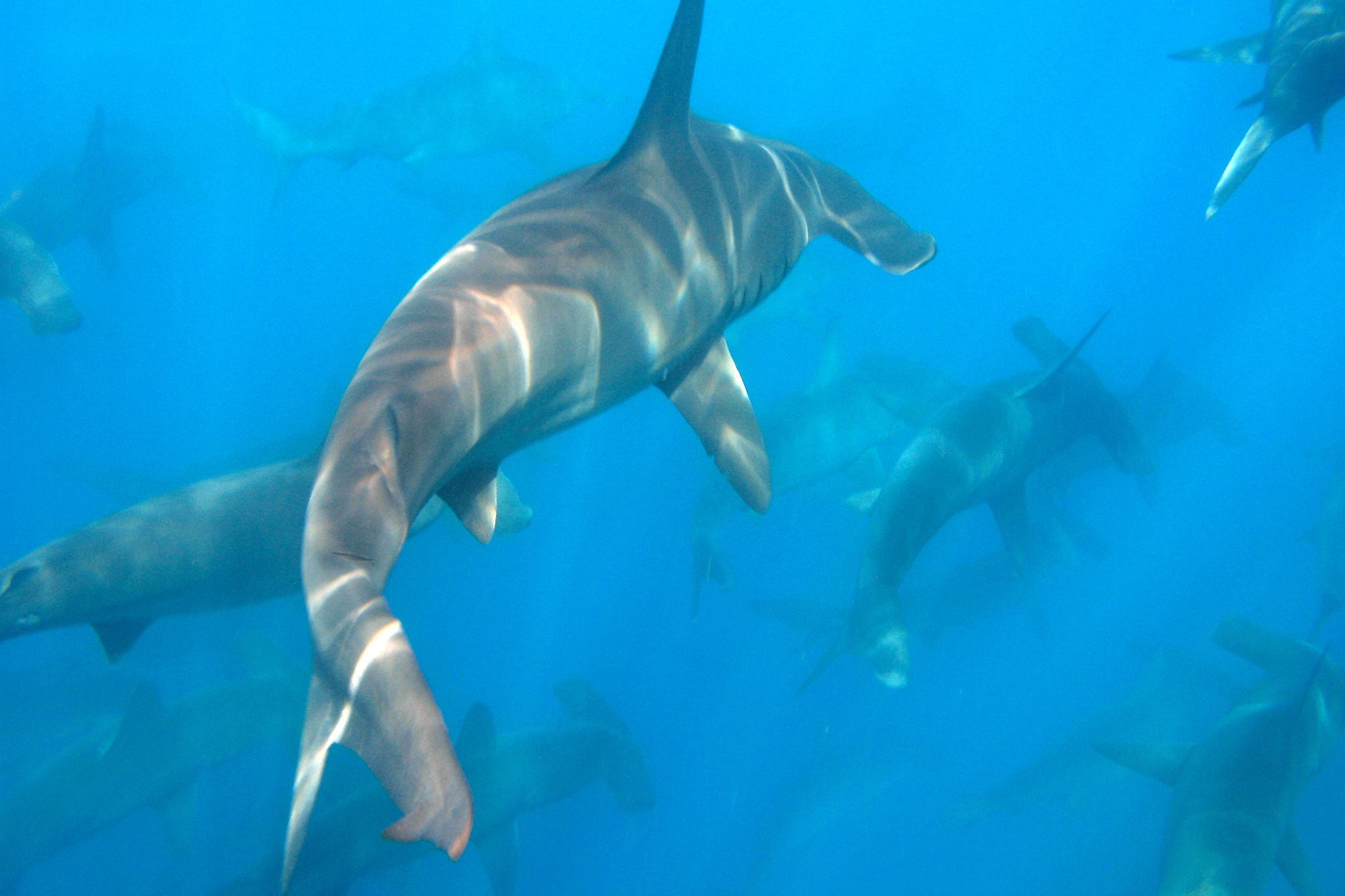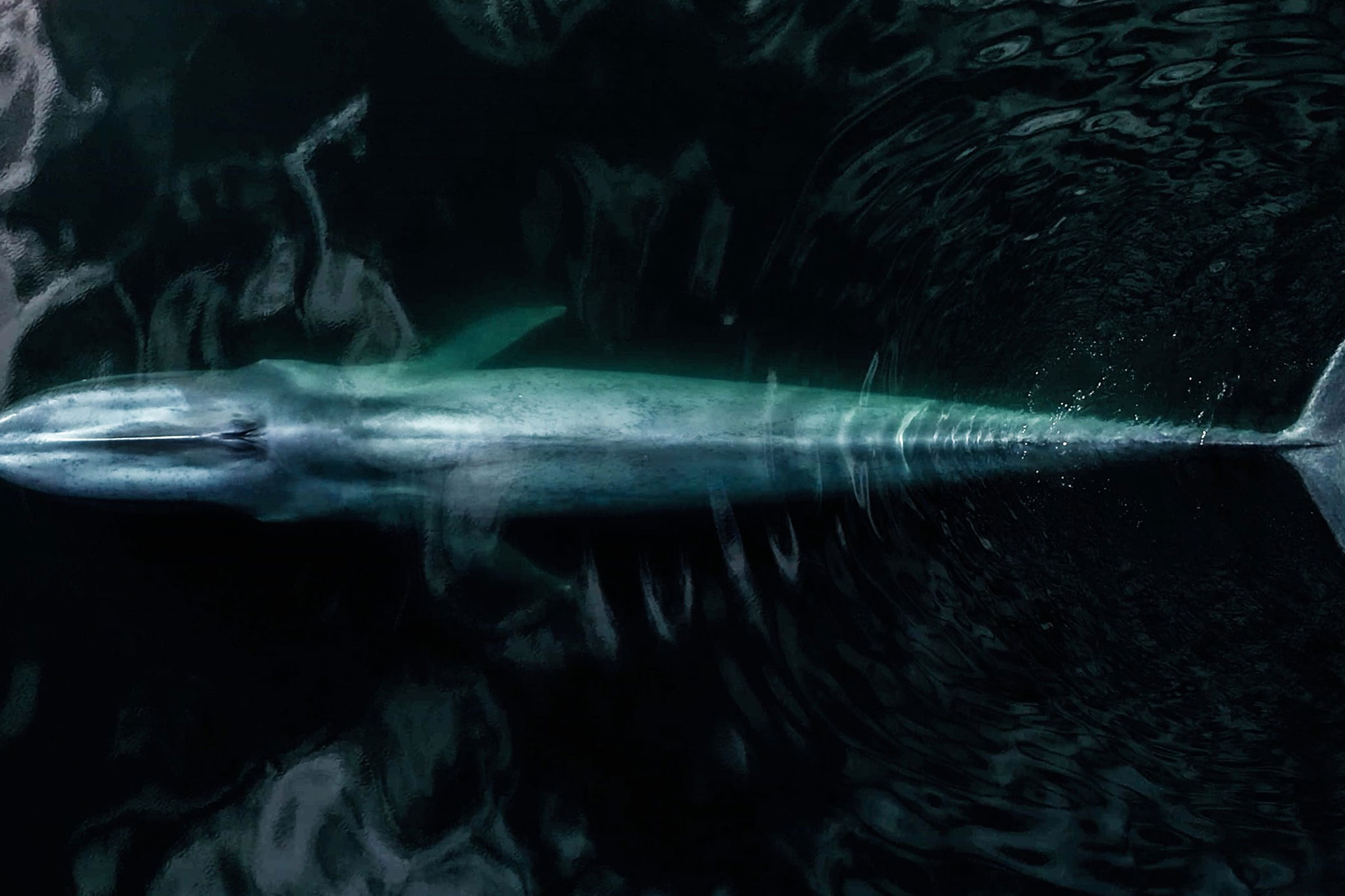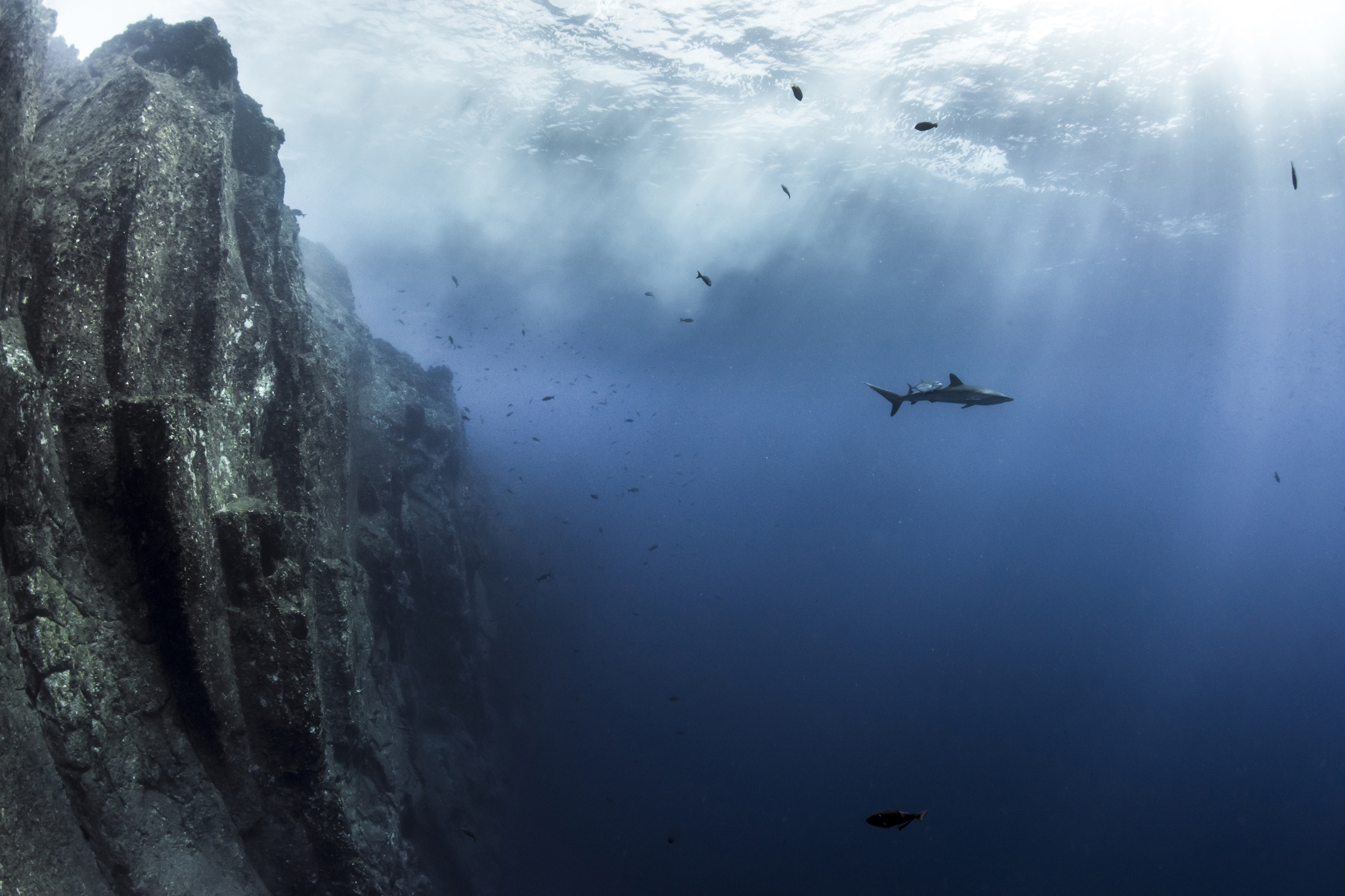How did you get so lucky to have Baja California Sur (Baja) as your base of fieldwork? This is a question I have heard again and again at Marine Mammal Conferences over the past 25 years.
Baja has a unique confluence of habitats, where the lush desert with the thickest stands of cacti on earth, meets the nutrient-rich, emerald Sea of Cortez to the east, and the mighty blue Pacific Ocean to the west. Here, there are islands that are home to strange plants and animals, hosting the greatest abundance of endemic species in North America. Towering jagged mountains rise abruptly the ocean, and deep, complex canyons shaped by tectonic forces over millennia, carve their way through land and sea. The force of the Pacific crashes into the peninsula and up along these underwater canyons, stimulating robust upwellings that bring massive swarms of nutrients to the surface and support a dazzling array of life.
Baja is also blessed by a staggering abundance and diversity of cetacean species (whales, dolphins, and porpoises), on a level that is matched in very few other places on earth. And in the Northern Hemisphere, Baja is in a league of its own as far as whales are concerned. Commercial whaling annihilated global whale populations in the 19th and 20th centuries, and given commercial whaling was primarily based out of New England and Europe, this region was significantly farther away to reach by water than the rich whaling grounds of Antarctica. The whalers, then lacking a canal through Panama, had much further to go to make it to Baja. However, despite this geographical advantage, the gray whales in particular, were still taken in vast numbers the Pacific lagoons, and although their population was severely depleted, they have made a robust recovery in the past few decades. Today, they once again populate the lagoons of Ojo de Liebre, San Ignacio, and Magdalena Bay, much to the joy of throngs of winter whale watchers.
The riches of Baja have captured the attention of some leading ocean storytellers. In the words of my friend, Shawn Heinrichs, an ocean conservationist, filmmaker and photographer:
“My film and conservation work has taken me to the most remote corners of the ocean to document some of nature’s most magnificent spectacles. Sadly, as a direct consequence of mass commercial whaling in the 19th and 20th centuries, the great whales have been notably absent throughout most of the ocean habitats I have filmed in. However, what I have experienced in Baja California Sur (BCS) has been truly mind blowing. The abundance and diversity of great whales and cetaceans found here is second to none. The frequency in which I have encountered great whales of various species along the entire coastline is beyond anything I have experienced. In a single trip, I encountered blue, fin, brydes, humpback and gray whales, along with super pods of common dolphins and resident pods of bottlenose dolphins. The waters surrounding BCS are truly one of the last great sanctuaries for whales in the northern hemisphere, and we must do all we can to protect these majestic creatures”.
Baja is home to all but four species of the worlds 13 great whale species and is a critical habitat for the endangered and iconic blue whale, the largest animal ever to live on earth. Baja is home to the rarest cetacean still living, the Vaquita Porpoise, and also home to quite possibly the newest species of whale to be discovered (2019), that for now we call the Guadalupe Beaked Whale. Blue, humpback and gray whales migrate up and down the west coast of Baja every year, while fin whales have a resident population in the Sea of Cortez, and sperm whales can be found in great abundance when there is squid in the sea. Brydes whales are also resident to the Sea of Cortez, while the less-common minke and sei whales can be found anywhere around Baja. With great luck, the extremely rare North Pacific Right Whale can also be found occasionally off Baja. In fact, anyone traveling the west coast of Baja will see whales at all times of the year, while the Sea of Cortez is a true whale watching paradise throughout the winter and into mid spring.
Marine Mammal biologist Dr. Jorge Urban has pointed out that resident fin whale
populations are known to occur in just three places on earth with the Sea of Cortez being one of them.
With an estimated population of <700> individuals, it has been established that the coastal corridor between La Paz and Loreto as well as the more northerly Midriff Islands are the prime calving grounds for this unique population of fin whales.
My work over the past 27 years has primarily focused on identifying large whales photographically, by capturing the unique pigmentation pattern and dorsal fin shapes and sizes that distinguish one individual another. Over these years I have made thousands of approaches to large whales and identified many hundreds of different individuals numerous species.
However, the primary focus of my work has been on the iconic and endangered blue whale. Some blue whale individuals exhibit strong habitat preference, and we have observed some of these “regulars” ten, fifteen or in very unique cases, as many as eighteen of the twenty-seven years Ive worked in Baja. Nubbin, White Eyes, Hook, Slice, and many others, are blue whales I instantly recognize, and when they are seen in yet another year, it feels like a rewith an old friend who has mysteriously disappeared for most of the year, only to faithfully return to their favored winter area, just as I do.
Though my working area has been primarily in a nutrient rich and rather small portion of the Sea of Cortez, in an around the Loreto Bay National Marine Park, which is without question a major blue whale hot spot, I recognize the critical need to expand our focus to to include the waters surrounding all of Baja California Sur (BCS). If we are to truly protect the whales, we must protect the waters throughout their migratory route in this region, and there is no better mechanism to achieve this than through the creation of the Eastern Pacific Marine Biosphere Reserve and further, through its inclusion in the Eastern Tropical Pacific Marine Corridor.
These magnificent ocean giants bring both pride and significant tourism income to people all around Baja California. From the gray whales of Bajas three Pacific Lagoons, to the orcas and humpbacks in the southern Sea of Cortez, to the blue whales of Loreto, the fascination with these awe inspiring whales is remarkable, and many fishermen are now switching their work in winter to whale watching tourism, an industry that is far more sustainable in the long run than the diminishing extractive fishing activities they have long practiced.
We must also not lose sight of the fact that these whales enrich the marine ecosystem in a significant way by stimulating vast phytoplankton blooms via their mineral rich enormous fecal plooms (poops). These planktonic blooms are both vast photosynthesis mechanisms and the base of the entire oceanic food chain. So more whales mean more fish, and without question, an enriched ecosystem that is not only good for nature but also for the communities who depend on it. So it is beholden upon us to clearly identify all critical habitats for the great whales in the waters surrounding Baja, and to enact protective measures to effectively address primary threats, such as the depletion of food sources, strikes by large ships and entanglement in fishing nets and other fishing gear.
The establishment of the Eastern Pacific Marine Biosphere Reserve around Baja California Sur would be one of the greatest steps in our time for the conservation of great whales in the northern hemisphere, and establish Mexico as a global leader in great whale conservation.
Sobre los autores
Michael Fishbach has 29 years experience studying large whales in the USA, Mexico, Canada, and the Azores. He conducts annual field research on the blue whale in the Sea of Cortez off Baja California, where for the past 26 seasons he has tracked the oldest and the best known blue whales on earth, as well as hundreds of other individuals. Michael is currently the Executive Director of the Great Whale Conservancy.
Shawn Heinrichs has 29 years experience studying large whales in the USA, Mexico, Canada, and the Azores. He conducts annual field research on the blue whale in the Sea of Cortez off Baja California, where for the past 26 seasons he has tracked the oldest and the best known blue whales on earth, as well as hundreds of other individuals. Michael is currently the Executive Director of the Great Whale Conservancy.
Destacados
“The waters surrounding BCS are truly one of the last great sanctuaries for whales in the northern hemisphere, and we must do all we can to protect these majestic creatures”.— Shawn Heinrichs.
“The establishment of the Eastern Pacific Marine Biosphere Reserve around Baja California Sur would be one of the greatest steps in our time for the conservation of great whales in the northern hemisphere, and establish Mexico as a global leader in great whale conservation”.— Michael Fishbach.










































































































